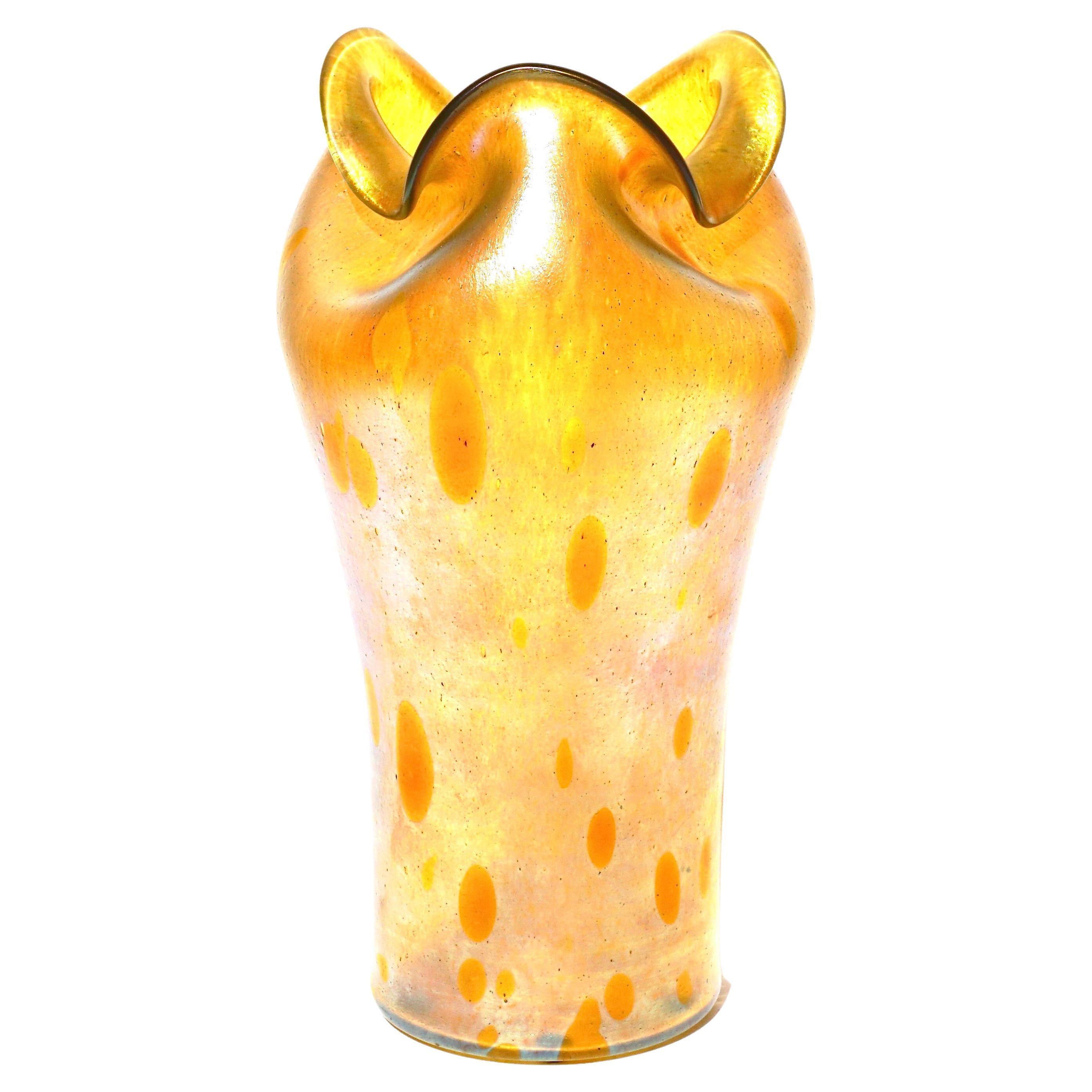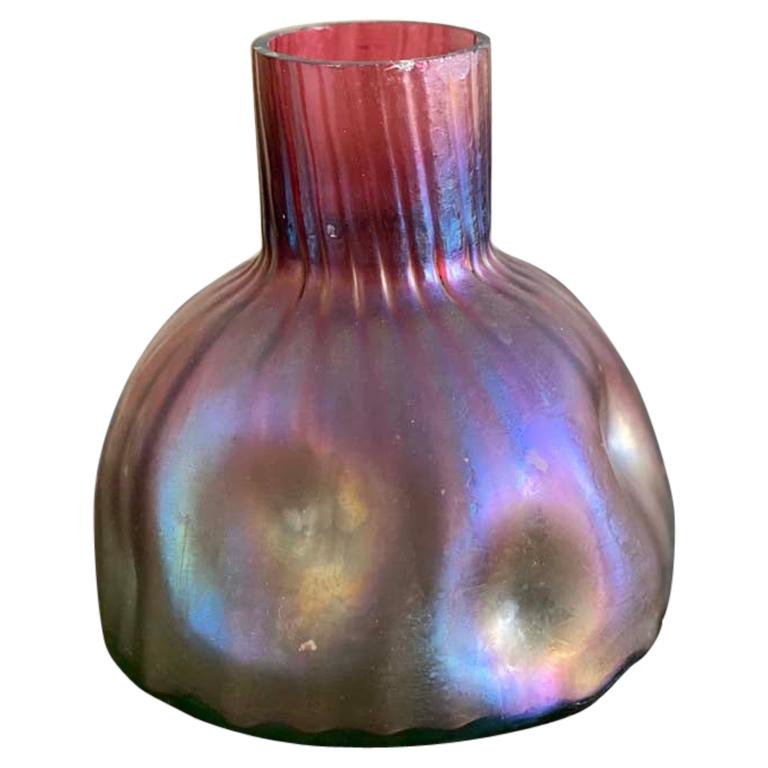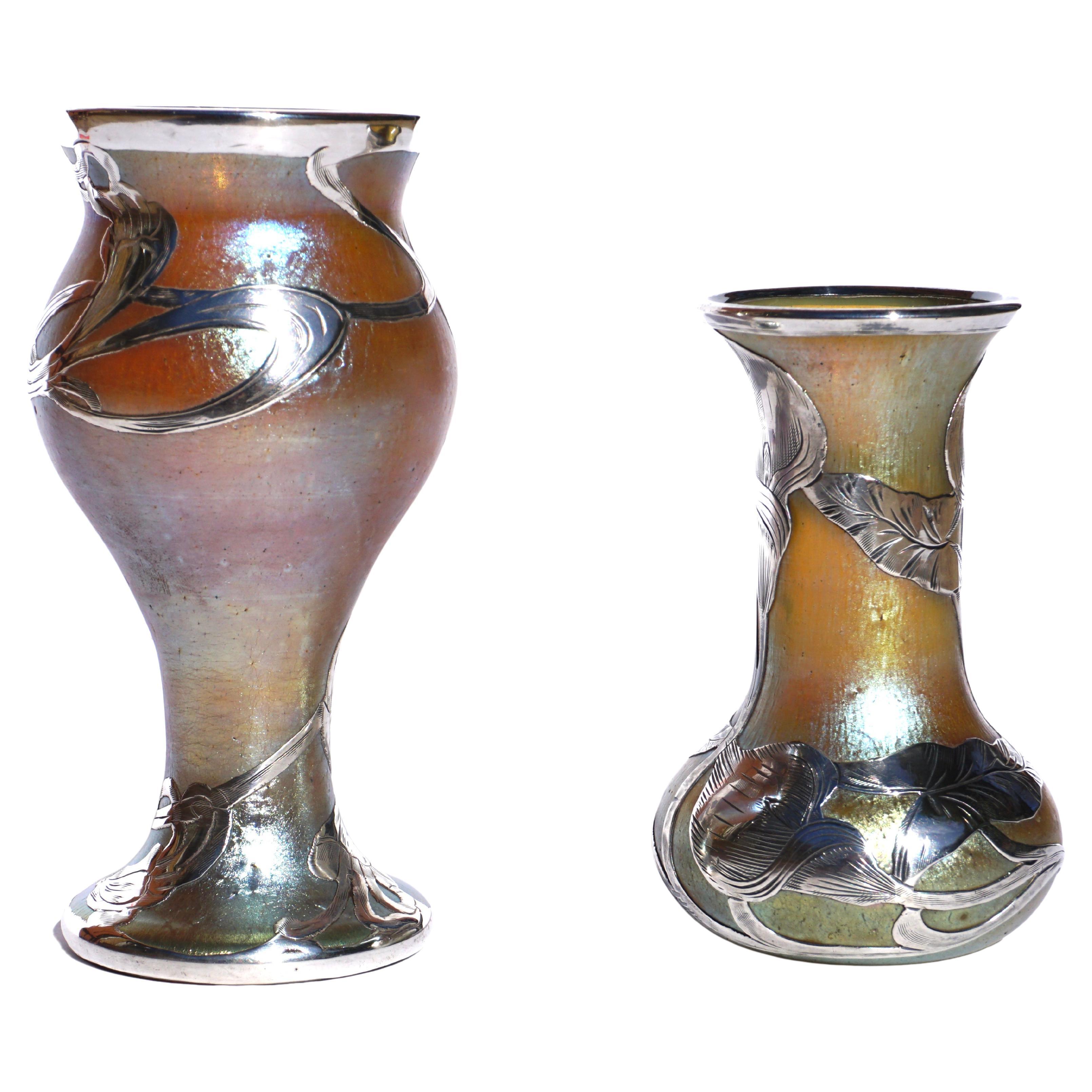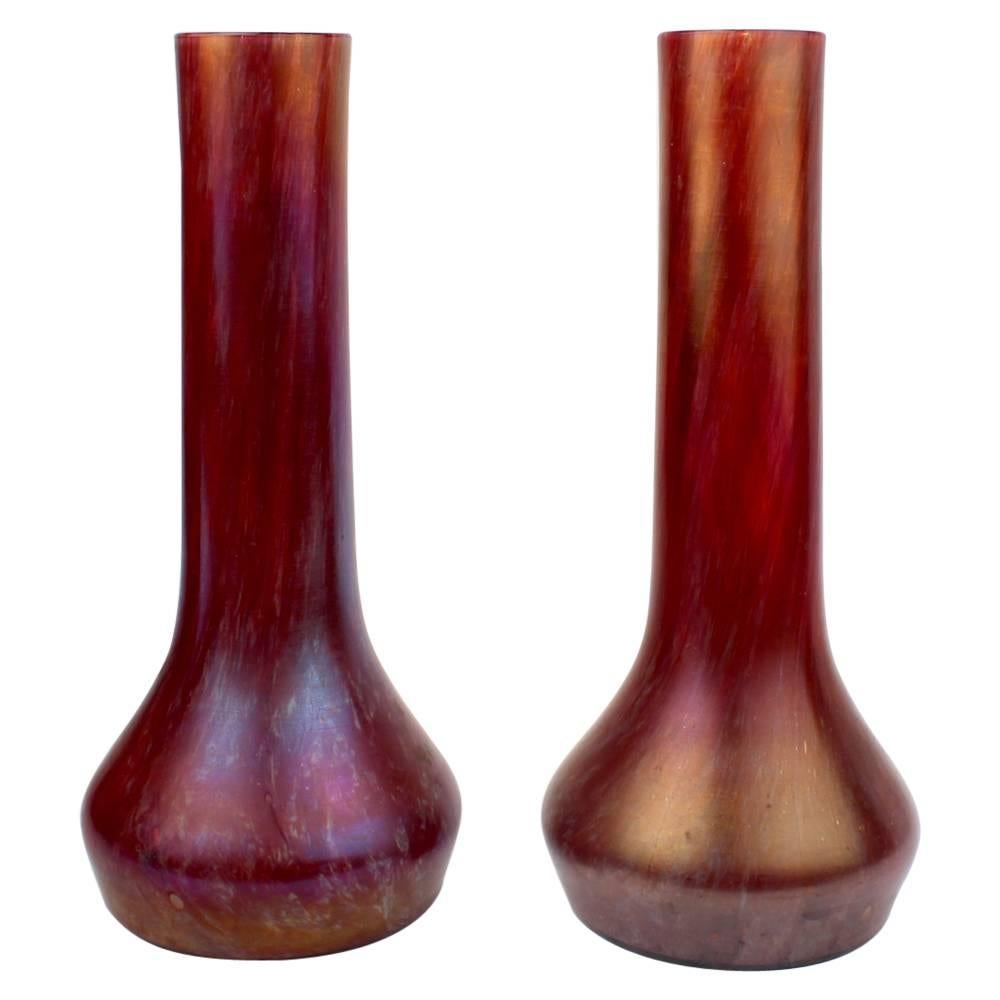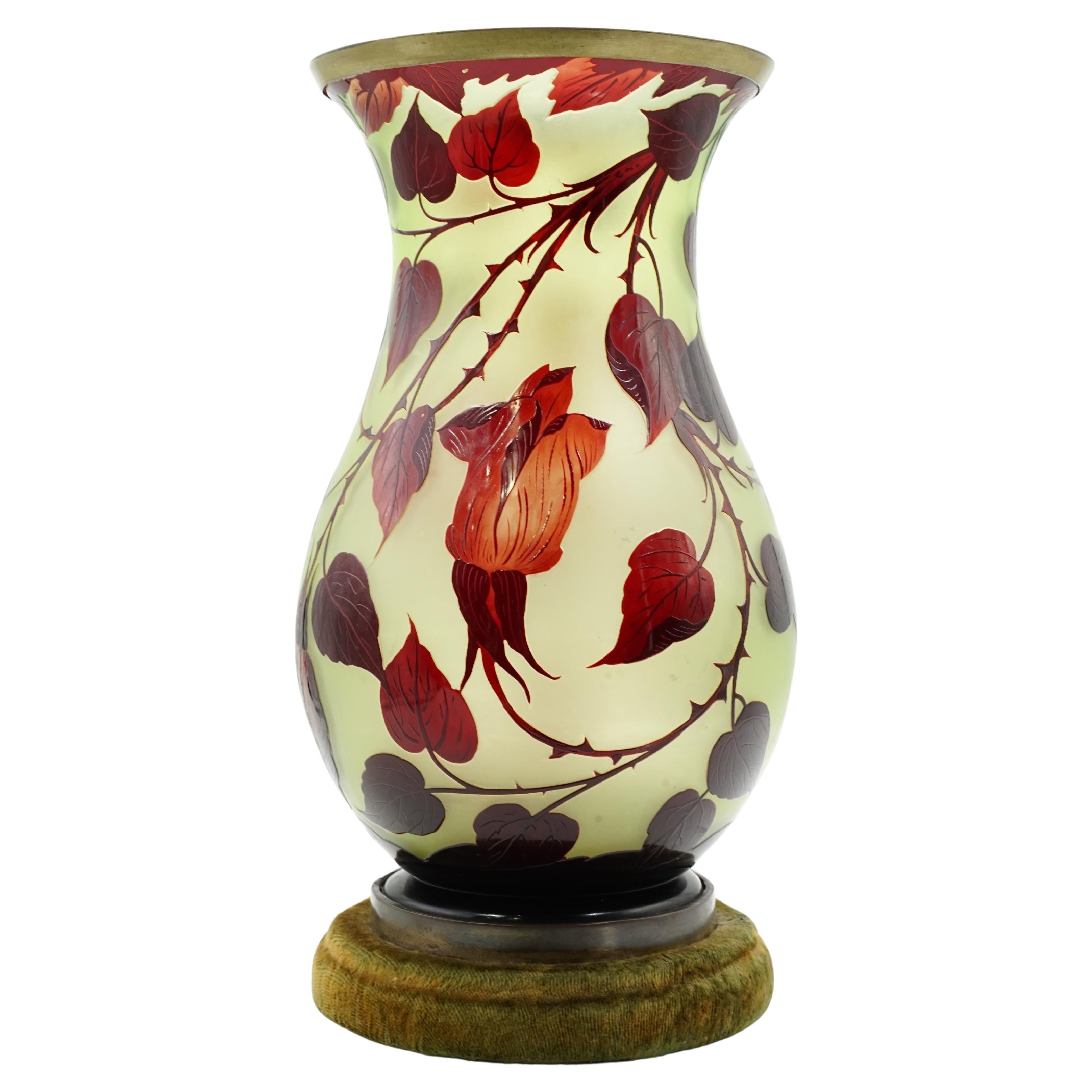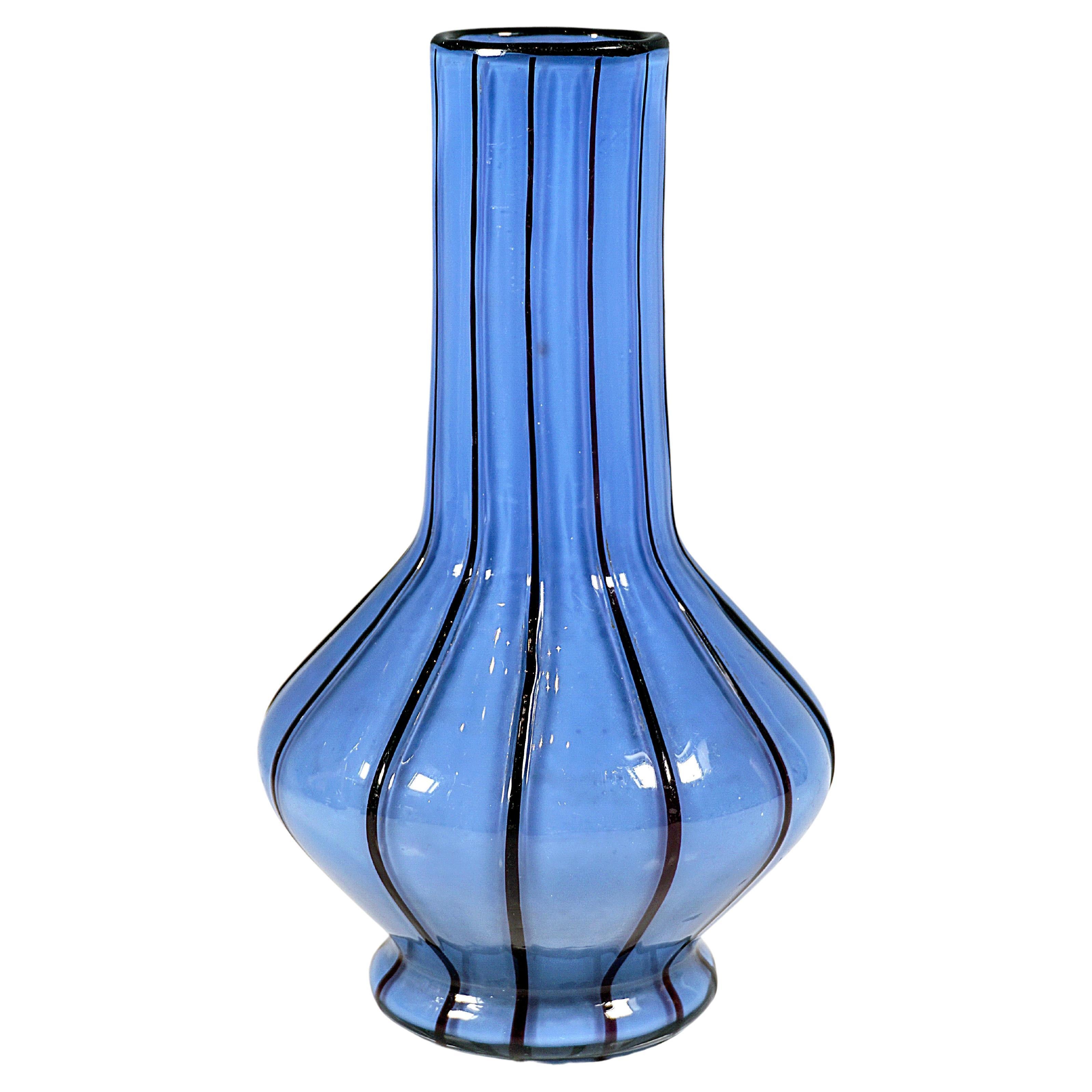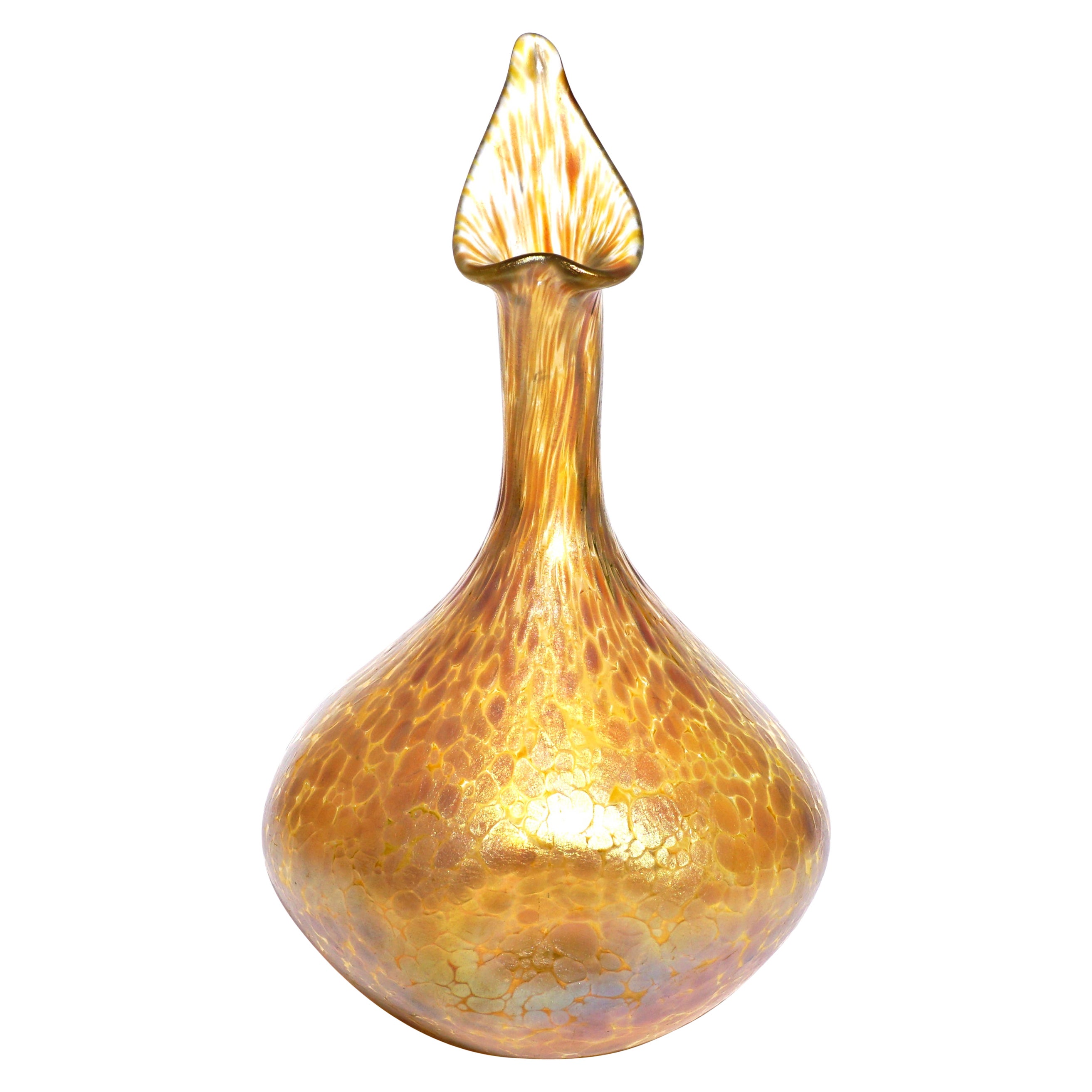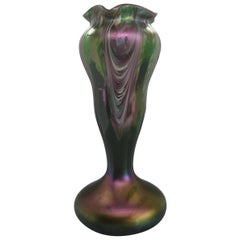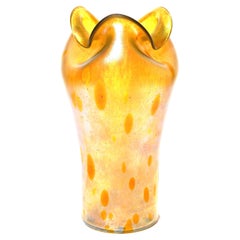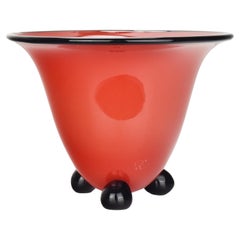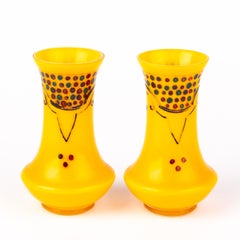
Pair of Loetz Style Tango Glass Bohemian Art Nouveau Vases
View Similar Items
1 of 5
Pair of Loetz Style Tango Glass Bohemian Art Nouveau Vases
About the Item
- Dimensions:Height: 5.12 in (13 cm)Width: 3.15 in (8 cm)Depth: 3.15 in (8 cm)
- Materials and Techniques:
- Period:
- Date of Manufacture:20th century
- Condition:Wear consistent with age and use.
- Seller Location:Nottingham, GB
- Reference Number:1stDibs: LU9003236422902
You May Also Like
- Art Nouveau Rindskopf Pulled Feather Czech Bohemian Art Glass Loetz Style VaseBy Josef Rindskopf’s Söhne, Loetz GlassLocated in San Diego, CAStunning Art Nouveau Czech Bohemian iridescent pulled feather art glass vase by Josef Rindskopf, circa early 1900s. The vase has wonderful color and design. Green clear glass body wi...Category
Early 20th Century Czech Vases
MaterialsArt Glass
- Loetz Astraea Art Nouveau Glass VaseBy Loetz GlassLocated in Dallas, TXA large Loetz Astraea glass case Circa 1905 A lovely yellow and oil spot decor "Astraea" vase by Loetz. The glass vase is cylindrical in form with a three-lobed mouth. The backgroun...Category
Antique Early 1900s Czech Art Nouveau Vases
MaterialsArt Glass
- Bohemian Loetz Red Tango Glass Vase w. Black Accents by Michael PowolnyBy Loetz Glass, Michael PowolnyLocated in Bad Säckingen, DEThis antique Art Nouveau art glass vase by Michael Powolny for Loetz is an impressive and highly sought-after art piece from the early 20th cen...Category
Vintage 1910s Austrian Vienna Secession Vases
MaterialsGlass, Blown Glass, Art Glass
- Pair of Art Nouveau Loetz Bronze Mount VasesBy Johann Lötz WitweLocated in Westport, CTArt Nouveau loetz glass mantel vases with bronze mounts.Category
Antique 19th Century Austrian Art Nouveau Glass
$1,800 / set - Pink Iridescent Art Nouveau Glass Vase in the Style of LoetzBy Loetz GlassLocated in Hamburg, DEElaborate and beautifully designed Art Nouveau vase in the style of Loetz. The glass has a charming iridescent effect, which is particularly accentuated by the deliberate hollows on ...Category
Antique Early 1900s European Art Nouveau Vases
MaterialsGlass
$236 Sale Price20% Off - Loetz Silver Overlay Art Nouveau Vases PairBy Loetz GlassLocated in Dallas, TXLoetz Art Nouveau circa 1900 art glass vases with floral and decorative scroll Silver Overlay. (Pair) Larger: Corset form in iridescent gold glass decorated with scrolling silver overlay and a blank cartouche. Height: 5.25 X 2.75 Diameter Condition: Mint. Smaller: Bulbous smoke stack form in iridescent green-gold decorated with scrolling silver overlay flowers. Marked: Alvin pat 67 Height: 4.25 X 2,65 Diameter Condition: Mint AVANTIQUES is dedicated to providing an exclusive curated collection of Fine Arts, Paintings, Bronzes, Asian treasures, Art Glass and Antiques. Our inventory represents time-tested investment quality items with everlasting decorative beauty. We look forward to your business and appreciate any reasonable offers. All of our curated items are vetted and guaranteed authentic and as described. Avantiques only deals in original antiques and never reproductions. We stand behind our treasures with a full money back return if the items are not as described. In 1836, Johann Eisner established a glassworks in the Southern Bohemian town of Klostermühle, today part of the Czech Republic and called Klášterský Mlýn. His heirs sold the glassworks to Martin Schmid in 1849, and two years later Schmid sold it to Frank Gerstner, attorney-at-law, and his wife Susanne. Susanne was the widow (‘Witwe’ in German) of Johann Loetz, a glassmaker about whom we know very little. Gerstner transferred sole ownership to Susanne shortly before his death in 1855, and she successfully led and expanded the company during the subsequent 20 years, manufacturing mainly crystal, overlay and painted glass. In 1879, Susanne transferred the company – now called ‘Johann Loetz Witwe’ – to Maximilian von Spaun, the son of her daughter Karoline. One year later, von Spaun hired Eduard Prochaska and the two of them modernized the factory and introduced new, patented techniques and processes. The first fruits of this collaboration were exciting innovations in Historicism glass, including Intarsia and Octopus glass and the very popular marbled (‘marmorisierte’) glass which imitated semi-precious stones like red chalcedony, onyx and malachite. Success at exhibitions in Brussels, Munich and Vienna were crowned by awards at the Paris World’s Exposition in 1889. In 1897, von Spaun first saw Tiffany Favrile glass exhibited in Bohemia and Vienna, and this convinced him that the art nouveau style was also the way to go for Loetz Witwe. The next eight years were to be the most artistically significant and profitable period in the entire history of the company. The Art Nouveau Period –The glassworks created large numbers of its own new designs of iridescent, trailing art nouveau glass, sometimes in collaboration with well-known artists and designers like Marie Kirschner and Franz Hofstötter (aka Franz Hofstätter). The zenith of Loetz art nouveau glass was epitomized by the so-called Phänomen series of designs, much of it designed by Hofstötter, which won a Grand Prix (alongside Tiffany, Gallé, Daum and Lobmeyr) at the Paris World’s Exposition in 1900. The company’s success during this period had two prime drivers – the technical expertise of Prochaska and the business acumen of von Spaun. Loetz Witwe created many of its own designs, and also supplied glass commissioned by major customers like E. Bakolowits (Vienna) and Max Emanuel...Category
Antique Early 1900s Austrian Art Nouveau Vases
MaterialsArt Glass
Recently Viewed
View AllMore Ways To Browse
Loetz Style
Unsigned Glass Vase
French Bathroom Plate
Amphora Austria Teplitz
Orchid Display
Amber Bubble Glass Vase
Extra Tall Vases
Czech Ditmar Urbach
Art Deco Tango
Doulton Lambeth Ware
Orange Foo Dog
Chinese Copper Pots
Steuler Design
Post War Japanese Vase
Old Paris Vases Urns
Moser Amethyst Vase
Calyx Vase
Steele Vase

